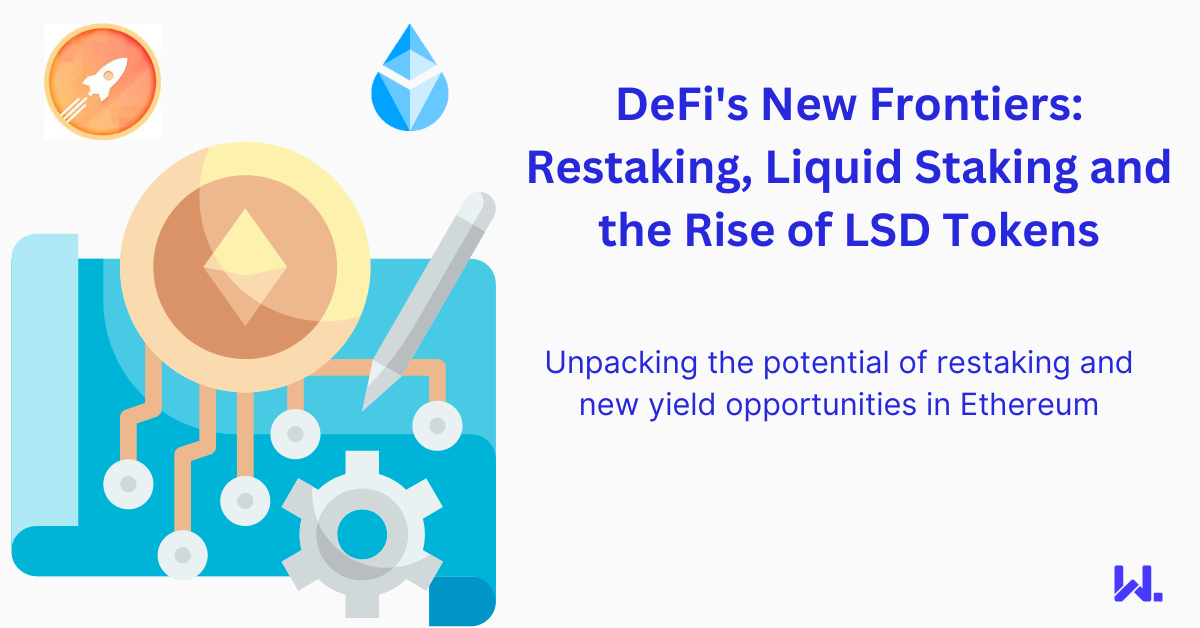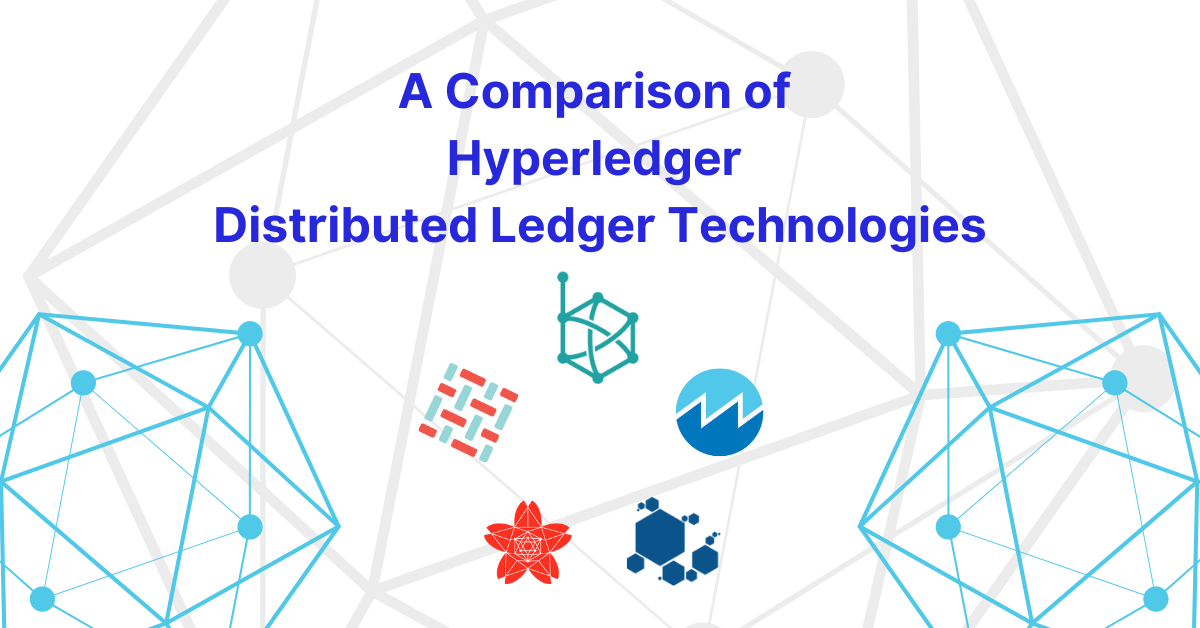DeFi's New Frontiers: Restaking, Liquid Staking & the Rise of LSD Tokens
Since Ethereum transitioned to proof of stake, anyone willing to stake their Ether can obtain around a 4% yield on their holdings. However, sitting on a token obtaining a steady yield is not enough for DeFi natives, and a number of protocols are emerging that allow stakers earn yield on their staked assets and also to restake their tokens.
This is likely to be a big growth area for DeFi, and there are a number of approaches already available, depending on the type of staking being undertaken. You can categorise staking activities on Ethereum into 2 camps, by running a validator or using liquid staking derivative tokens.
If running a validator on the Ethereum network, you are locking up denominations of 32 Ether and running the consensus layer and execution layer clients yourself. For this, you will be paid a yield of your staked Ether directly into an Ethereum wallet.
LSD Tokens
Liquid staking derivative (LSD) tokens are tokens issued by services to which you can delegate your Ether who will stake it on your behalf. In return, you are issued with a token that tracks the value of your staked Ether and can be redeemed 1:1 at any time.
The advantage of an LSD token is that it provides liquidity of staked Ether, which for most DeFi users means additional yield opportunities.
Imagine if you could deposit money in a bank savings account and then be issued with equivalent funds by your bank for you to use as you please? This is effectively what LSD tokens provide you with.
The two most popular LSD tokens are Lido's stETH and RocketPool's RETH. Both of them offer a similar yield, however, the way in which they do this differs.
With stETH, yield is paid directly to the wallet holding the stETH, so from a tax perspective there may be income tax to pay on this. Whereas with RETH, staking rewards accumulate via the value of the token increasing, so it's only when it is sold the accumulations are accounted for.
In order to obtain stETH or RETH, users can deposit Ether via the Lido or Rocketpool websites, or simply exchange Ether for these tokens via a decentralised exchange such as Uniswap.
Alternatively, you can stake directly with Rocketpool using denominations of 16 Ether and not only gain additional Ether staking rewards but also Rocketpool's governance token RPL.
Lido currently restricts staking to a limited number of participants on their network. They do intend to open it up more widely in the future, but this centralised model of staking services is the main criticism against their service currently.
LSD Yield
Providing yield opportunities is where there has been a lot of focus recently in DeFi, LSD tokens are a relatively nascent asset class, and services are spinning up to cater for them. These services provide yields for LSD tokens in addition to the underlying staking yield they already benefit from.
Curve Finance is a popular venue for a yield on LSD tokens, it provides liquidity pools for these tokens such as stETH/ETH and RETH/ETH which can be used to gain a yield. Liquidity pool rewards on Curve can then be boosted using Convex Finance.
Frax Finance is providing a DeFi ecosystem (stablecoins, DEX and lending) which also caters for LSD tokens. These Frax stablecoins are fully crypto-collateralised, none of them use fiat currencies like USDC for instance.
In addition to this, you also have Origin Protocol's OETH which provides a convenient way to obtain yield across a number of these DeFi services simply by depositing ETH or LSD tokens into their app.
The yield opportunities offered by these DeFi platforms and others for LSD tokens are not that dissimilar from other stablecoins insofar as investors in them are providing liquidity for DeFi services such as automated market making. However, mechanisms to re-stake funds are on the horizon, with Eigenlayer at the forefront of this new DeFi infrastructure.
Restaking
Eigenlayer is providing yield opportunities for stakers in the form of restaking. Restaking on Eigenlayer involves taking existing staked assets to secure additional services such as rollups, bridges, and data availability networks.
With Eigenlayer, teams building core services will no longer need to bootstrap the trust in order to secure their system. Historically when blockchain networks were launched a token was required to secure it, and you needed to ensure that the token had enough value to prevent a nefarious actor having a majority stake in it.
Eigenlayer solves this issue by enabling stakers to restake their staked Ether. These restakers can then choose to allocate proportions of their staked assets to new services that are spinning up using Eigenlayer to secure themselves.
As far as I know, Eigenlayer is unique within the Ethereum ecosystem and will no doubt incentivise a number of new services to spin up using their infrastructure as their backbone.
They have yet to launch on mainnet, but intend to support not just LSD tokens RETH and stETH, but also allow Ether stakers to deposit their staking rewards directly into the protocol's smart contracts for allocation by the stakers.
Compounding Risk
Ethereum only finished its transition to proof of stake in April when withdrawals of staked Ether became possible. Whilst Lido, Rocketpool and other LSD projects have been around for a while, they are still in their infancy compared with other parts of the DeFi ecosystem such as lending, DEXs and fiat-backed stablecoins.
Returns can be very attractive when you're considering taking an asset generating a 4% yield and then re-investing it to gain another 4% yield on top of it, and potentially another on top of that. However, each re-investment compounds your overall risk position.
Whilst it hasn't happened thus far with LSD tokens, we all know that smart contracts do on occasion get hacked, or token values can go to zero. I certainly feel more relaxed about staking Ether for a 4% yield versus the overhead of depositing it into a protocol that may more than double that yield but is nothing like as proven as the Ethereum network itself.
He argued if you end up with a significant proportion of the Ethereum validator set restaking who in turn are susceptible to social consensus for an application they are helping to secure, they could end up influencing decisions on the Ethereum mainnet due to the stake they represent. This could result in changes to Ethereum coming about due to decisions being made by an entirely separate application running on a network secured by funds restaked from Ethereum.
It’s also important to keep in mind if there were a true liquidity crunch taking place on a Curve Pool or LSD protocol, would you be able to ensure you were able to get in line first to get your funds out safely?
Restaking and LSD protocols are truly starting to take off and are a significant area for growth in DeFi. It remains to be seen how sustainable the current set of projects will be, but it’s an exciting time as it’s only just getting properly started.





